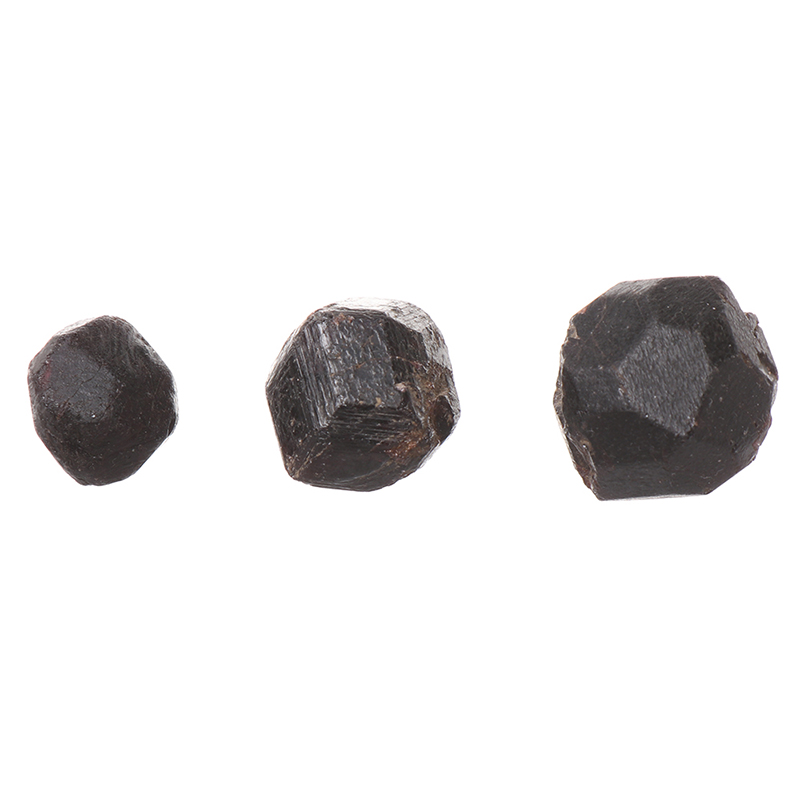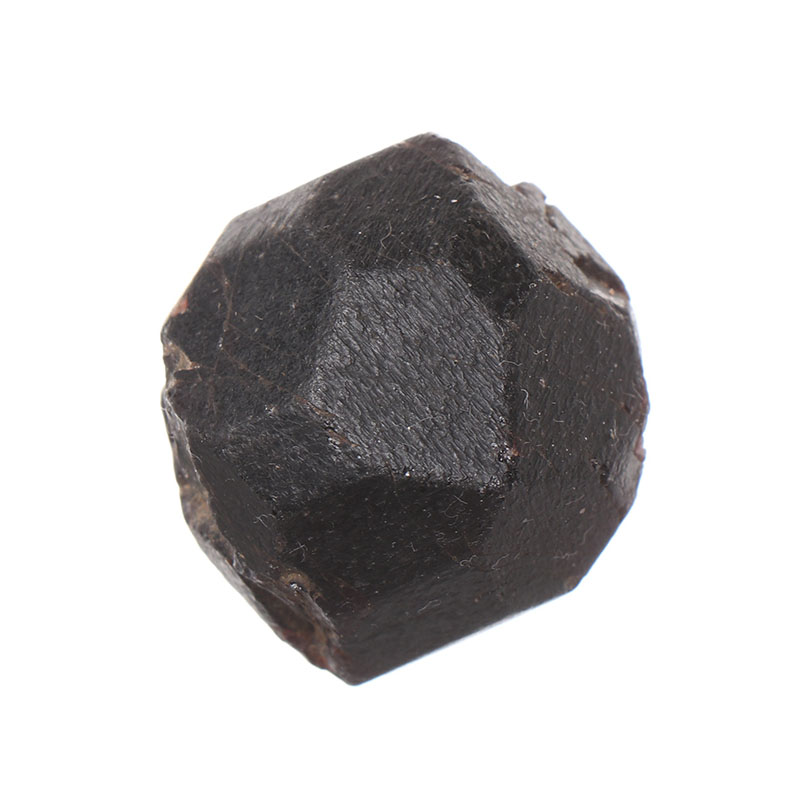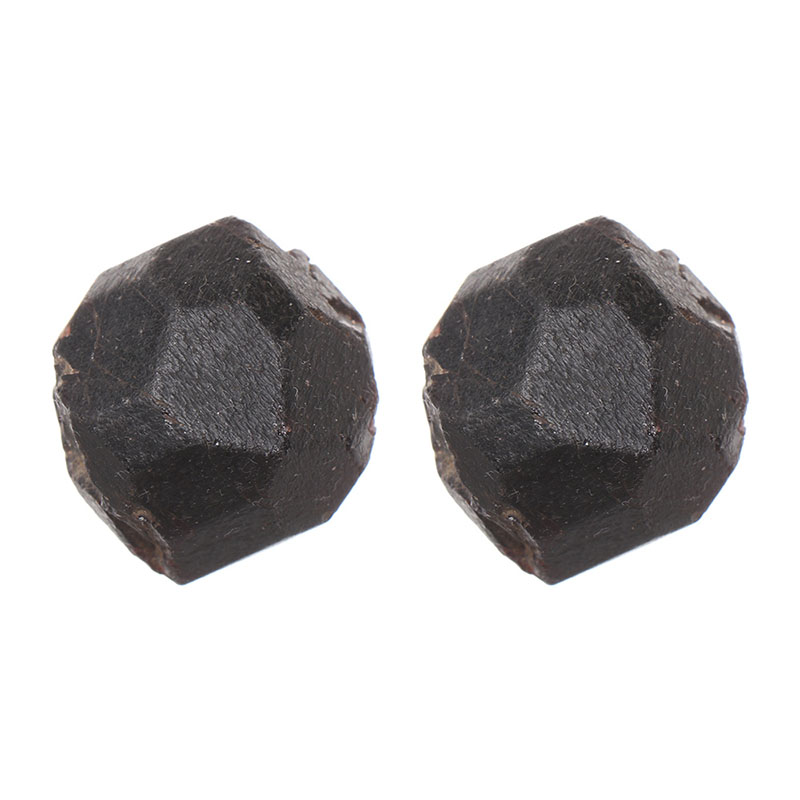The English name of “Pyrope” garnet comes from the Greek word “Pyropos,” meaning “Firelike.”
The color of Pyrope garnet is usually dark-red or slightly brown or orange-red. It is commonly used for jewelry, especially in the Victoria and tsarist periods; Pyrope garnet was mostly used in jewelry. At that time, it was not only a trend in jewelry design but also a major gem set on the crown.
Since the Bronze Age, some Pyrope materials have been used as refined abrasives, and gem-grade Pyrope has ornate clothing.
Pyrope garnet is commonly known commercially as rhodolite garnet. It is red or light red due to its iron (Fe3+) and chromium (Cr3+) content. The main producing areas are South Africa, Russia, Arizona, New Mexico, and Utah in the United States.
Arizona Ruby, commonly known in the jewelry market, refers to Pyrope garnet. We must understand that Arizona Ruby, Arizona Spinel, Montana Ruby, and Mexico Ruby, in the words of those gem sellers, refer to Pyrope garnet rather than ruby.

Basic properties of Pyrope garnet
[Chemical composition]
It often contains impurities such as Ca, Fe and Cr, and pure Pyrope garnet has not been found in nature. It often forms a continuous isomorphic series with Almandine garnet, and a small amount of grossular garnet molecules can also be found.
The Pyrope in Ultrabasic rocks, such as kimberlite and peridotite, often contain more Cr2O3 (about 1-7%), which can be called chromian Pyrope (about 1-3% of Cr2O3), and chrome pyrope (about 4-7% of Cr2O3, but it can also reach about 10% or even 13%)). The content of Cr2O3 in Pyrope garnet directly affects its color.
[Crystallization characteristics]
There is often no perfect crystal form.
[Optical properties]
Color: pink or yellowish brown; Light red to brown in flakes. The color of Pyrope varies with the content of chromium. According to research, when Cr2O3 is below 25% and TiO2 content is high (70.5%), it is light pink to red; When Cr2O3 is 0.2-18%, the color of the mineral changes from light orange-yellow to dark purple.
- Protrusion: High positive protrusions, but slightly lower than other garnets.
- Refractive index: The refractive index increases with the level to which Fe replaces Mg.
- Cleavage: no cleavage, crack development.
- Interference color: usually homogeneous.
- Extinction property: full extinction.
- Dispersion: weak.
[Change]
Pyrope garnet can undergo Kelyphitization reaction to form minerals such as amphibole, plagioclase or fibrous amphibole, and euchlorite.
It forms a circular secondary rim around the Pyrope garnet. Sometimes the Pyrope garnet is weathered to form a limonite shell, accompanied by radioactive chlorite minerals.

Where does Pyrope garnet come from?
Pyrope garnet occurs in ultrabasic rocks such as kimberlite, peridotite, serpentinite, eclogite, basalt, and placer ore.
Ordinary Pyrope is not all the “satellite minerals” of diamond, but the Cr2O3, high purplish red chrome Pyrope or Chromium-Bearing Pyrope, and their symbiotic association with picrocrich, chrome-diopside, perovskite, and other minerals are often an important symbol for tracing kimberlite protolith to explore diamond deposits.
Value of Pyrope garnet
The transparent and pure Pyrope garnet with blood red color can be used as the raw material of gems or handicrafts and is called “ruby.”
Pyrope garnet is generally red and rose red, with glass luster and good transparency. Usually, Pyrope garnet with pink and purple is popular among consumers. It is usually 1~10 carats in size, and the unit price is not different, 40~150 USD per carat.
Garnet with iron-aluminum and magnesium-aluminum components is called Rhodolite. Its purple color is more than that of Pyrope garnet, and its unit price is similar to that of Pyrope garnet, which is popular with young consumers.
Pyrope garnet varieties
Gem-grade Pyrope garnet can be roughly divided into seven types according to the differences in color, special optical effects, and other characteristics of arts and crafts, origin, and commercial significance.
Rhodolite garnet: Rhodolite garnet is the red color of Pyrope garnet, produced in places such as South Africa, former Czechoslovakia, Jiangsu, and Fujian in China. Among them, purple garnet is also called “purple garnet.”
Color-changing garnet: Color-changing garnet is the one with the color-changing effect of garnet. It is green or blue-green under sunlight, red or purplish-red under incandescent lamps, and occurs in alluvial sand deposits developed along the Umba River in Tanzania.
Through the test and research of the Gemological Institute of America (GIA), it is confirmed that the composition of color-changing garnet is Pyrope garnet to spessartite garnet, and the content of manganese is equivalent high. However, its chromium content is very low (CrO 0.1%), and the obvious and unusual color change is caused by more than 1% V2O in garnet. Its refractive index is 1.765, and its density is 3.88g/cm.
Malaya garnet: Malaya garnet (Malaya or Malaia), also known as “Umba stone,” was once considered to be a garnet of the solid solution series of Pyrope and spessartite containing a certain amount of grossular garnet, with the refractive index of 1.750~1.770 and density of 3.84~3.95 g/cm.
According to the research, this garnet is orange-red to orange-yellow, distributed along the alluvial sand deposit of Umba River and several plains extending northward from the border between Tanzania and Kenya to Maganma Ridge of Mount Taita.
It was discovered in the mid-1960s by miners who mined mafic garnet in the Umba Valley. At first, it was thought to be spessartite, but in the early 1980s, it was famous for Swahili’s name, “Malaya Stone.”
Its characteristic is that it does not belong to the traditional garnet type but is one of the members of the garnet solid solution series of Pyrope and spessartite, containing more almandite garnet and Grossular. After cutting and processing, it has a red flashing light. There are differences in chemical properties.
Cape ruby: Cape ruby is a blood-red garnet produced in Cape of Good Hope, South Africa.
Bohemian ruby: Bohemian ruby, also known as “Bohemia garnet,” is a garnet produced in the Bohemian region of former Czechoslovakia, which is red, dark blood red, and other colors.
Arizona ruby: Arizona ruby, a gem-grade red Pyrope garnet produced in Arizona, USA, is even called “Arizona spinel.”
Colorado ruby is a gem-grade red Pyrope garnet produced in Colorado, USA.
Elieruby: Elieruby is a gem-grade red Pyrope garnet produced in Illia and Fevershya, Scotland.
Obviously, the above-mentioned classification of some Pyrope garnet varieties according to different origins has only historic or traditional commercial significance or is only a “commodity classification .”It is inappropriate to call it Ruby.

How to identify Pyrope garnet
The difference between Pyrope garnet and other garnet gemstones is first and foremost in their respective chemical compositions, but also in their differences in physical properties, and arts and crafts characteristics.
For example, Pyrope garnet is easy to mix with these garnets, such as almandine and spessartite garnet, with the same texture and isomorphic series.
The difference is:
Pyrope garnet is always fresh, red, rose, or pink and turns purple-red or maroon. While the color of almandine is darker, showing red, dark red, dark brown-red, and black red, and it turns brown when rotating.
Spessartite garnet is slightly light, orange-red, orange-yellow, and other colors and turns yellowish brown or orange-yellow when rotating.
The refractive index of Pyrope is low (1.746), while that of almandine is 1.790, and that of Spessartite garnet is 1.810.
Pyrope garnet has three wide absorption bands at 576nm, 527nm, and 505nm, while almandine garnet has two weak absorption bands in the blue and orange regions in addition to these three absorption bands. There is a very strong absorption band at 432nm in the violet region for the spessartine garnet.
The density of Pyrope is relatively low (3.78 g/cm3), while that of almandine is 4.05 g/cm3, and that of spessartine garnet is 4.15 g/cm. According to these characteristics, we can distinguish them from each other.
Other gemstones similar to Pyrope garnet
Other gemstones similar to Pyrope garnet include ruby, red spinel, red tourmaline, etc.
Their main differences are physical properties, arts and crafts performance, etc.
For example, ruby belongs to the trigonal crystal system and has obvious dichroism. There are four changes of light and shade under the polarizer; the refractive index is 1.762 ~ 1.770, the density is 4.00 g/cm, etc., so we can easily distinguish it from Pyrope garnet.
Although the Pyrope garnet and the red spinel belong to the same equiaxed crystal system, the Pyrope garnet contains irregular and large round grain inclusions and sparse acicular rutile inclusions, while the red spinel contains very small octahedral spinel inclusions.
In addition, the refractive index of red spinel is 1.718, there is a wide absorption band between 490mm and 595nm, and the density is 3.60g/cm.
These are the effective identification basis between them.
Red tourmaline also belongs to the trigonal crystal system, with extremely obvious dichroism. There are also four changes in light and shade Under the polarizer, with a refractive index of 1.624 ~ 1.644, a density of 3.06 g/cm, thermoelectricity during friction, many inclusions (solid, liquid, gas), etc., which can easily distinguish Pyrope garnet from it.
Conclusion:
Pyrope gemstones (Pyrope) are beautiful light pink, light purple, strong orange, blood red to dark purple. Originally, the pure Pyrope garnet should be colorless, and various reds are caused by Fe3+and Cr3+.
Purple-red and deep-peaked purple transparent crystal of Pyrope garnet is a very popular intermediate gem in the international gem market.
Pyrope garnet is mostly made into grinding petal ring face stone, flashing with purple-red glass flashes. It looks like there is a “reflective layer” in the interior, which is a “straight line” or “herringbone” bright band, which is very popular.
Sometimes, when the transparency of the “naked face stone” is excellent, “six star-shaped flashes” can be seen, which is called the “StarGarnet,” and it is the best product.
